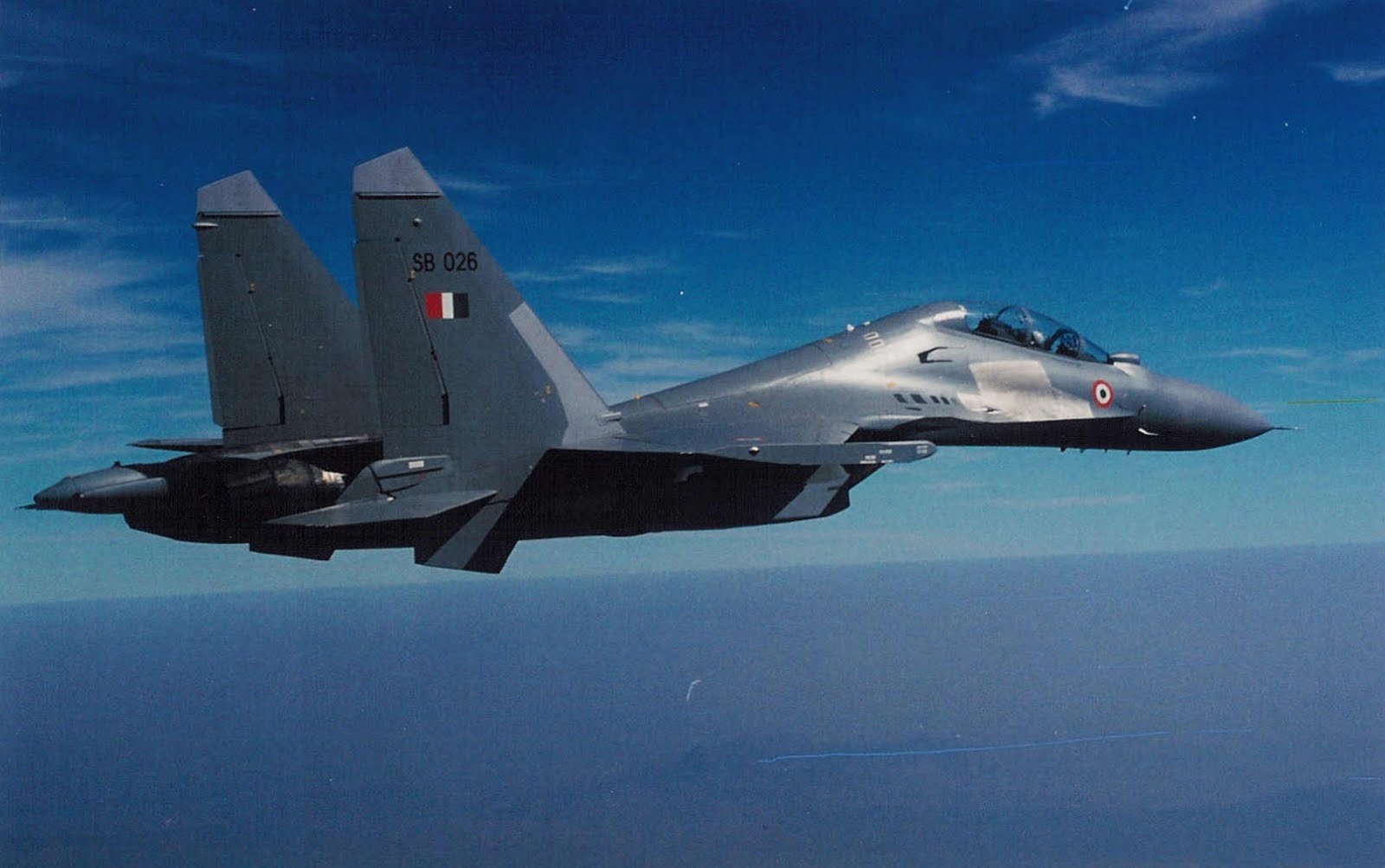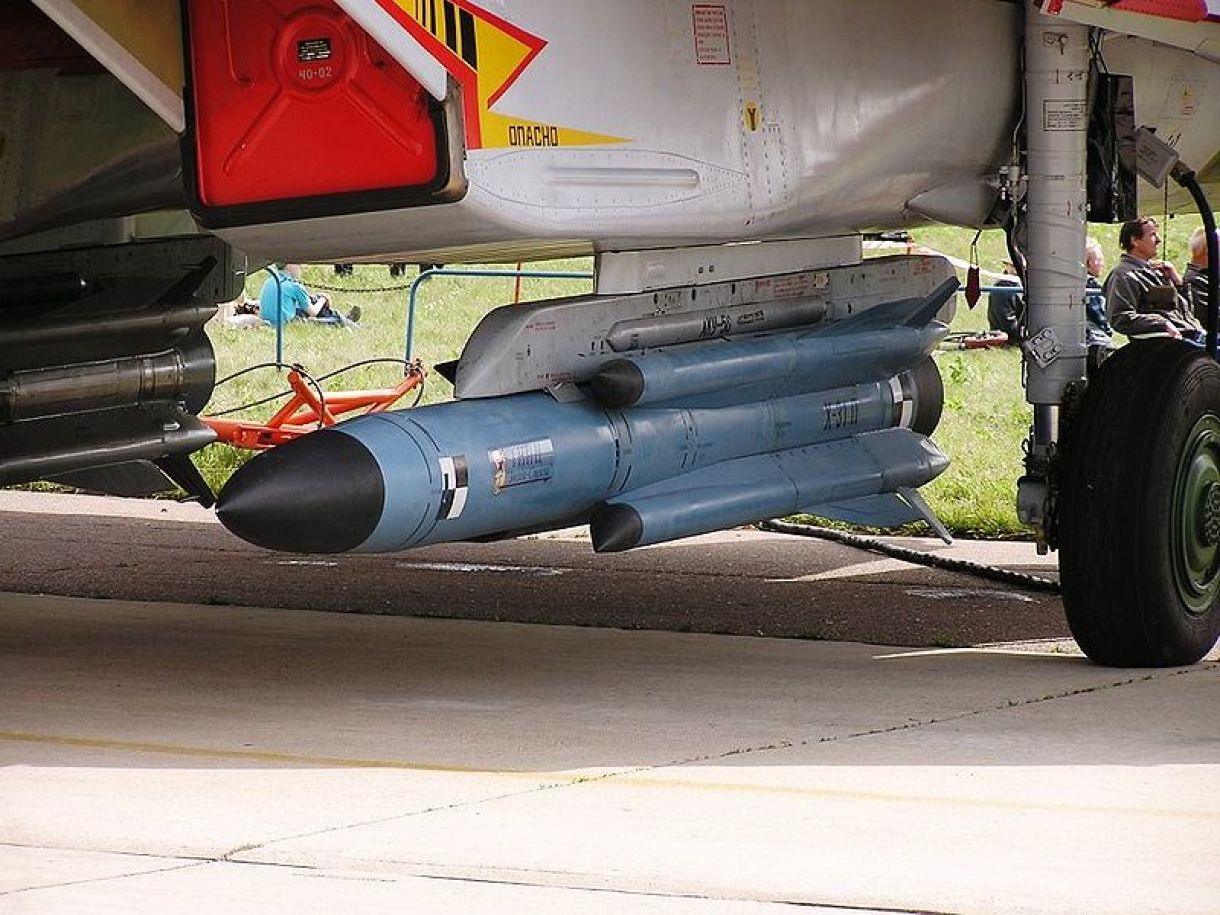Amidst escalating tensions along the Sikkim frontier, where China has deployed its formidable J-20 stealth fighters, India has unleashed a sonic fury of its own. In a defiant display of indigenous prowess, the nation successfully tested its RudraM-II air-to-surface missile, drawing inspiration from Russia’s lethal Kh-31PD, affectionately dubbed the ‘Supersonic Death.’
The RudraM-II, an indigenously developed solid-propelled missile system designed to neutralize various enemy assets, was flight-tested from an Indian Air Force Su-30MK-I platform off the Odisha coast.
This successful test confirms the RudraM-II as a significant force multiplier for the Armed Forces, primarily as an air defense weapon launched from the air to target ground and ship threats.
The flight test achieved all trial objectives, validating the propulsion system and the control and guidance algorithm. The missile’s performance was verified using flight data captured by range tracking instruments, including electro-optical systems, radar, and telemetry stations, deployed by the Integrated Test Range, Chandipur, at various locations, including an onboard ship, according to the official announcement.
Indigenously developed Air to Surface RudraM-II missile was successfully flight-tested from Su-30 MK-I off the Odisha coast today. The flight-test met all the trial objectives, validating the propulsion system, control & guidance algorithm@DefenceMinIndia @SpokespersonMoD pic.twitter.com/xEYxhckQTZ
— DRDO (@DRDO_India) May 29, 2024
Developed by the Defense Research and Development Organization (DRDO) in collaboration with the Indian Air Force and Hindustan Aeronautics Ltd., the RudraM-II is the latest addition to India’s burgeoning arsenal of indigenous missiles.
The development series of these missiles began around eight years ago, with future tests and inductions planned to enhance the IAF’s air superiority and tactical capabilities.
With plans to integrate the RudraM-II into India’s cutting-edge fighter jets, including the indigenous Tejas, AMCA, and TEDBF, the nation’s air power is poised to soar to unprecedented heights. These missiles are also compatible with MiG-29, Mirage, Jaguar, and Sukhoi aircraft, providing a formidable deterrent against potential adversaries.
China’s ‘Mighty Dragon’ Spreads Its Wings
In a move that has raised eyebrows across the region, China has flexed its military muscle by deploying its formidable J-20 stealth fighters at Shigatse, an air base a mere stone’s throw from the disputed Sikkim frontier.
Just a day before India’s triumphant test of the RudraM-II missile, reports emerged of the ‘Mighty Dragon’ taking up positions a scant 290 kilometers from Hasimara in West Bengal, where India’s second squadron of 16 Rafale jets stands guard.
The J-20, a twinjet all-weather stealth fifth-generation fighter developed by China’s Chengdu Aerospace Corporation, is a cutting-edge marvel designed for air superiority and precision strikes. With its advanced stealth capabilities and formidable armament, the J-20 represents the spearhead of China’s ongoing military modernization efforts.
As the world watches the escalating tensions along the Sikkim border, where China’s J-20 ‘Mighty Dragon’ prowls dangerously close, India’s successful test of the RudraM-II sends a resounding message: the nation is ready to unleash its own ‘Supersonic Death.’
RudraM-II Echoes Russia’s ‘Supersonic Death’
Drawing inspiration from Russia’s formidable Kh-31PD missile, the RudraM-II stands as India’s lethal riposte to the threat of enemy air defenses.
The Kh-31PD christened the ‘Supersonic Death’ by Russian pilots for its blistering speed and devastating counter-attack capabilities, has proven itself a scourge on the battlefields of Ukraine, with a staggering 98% success rate over several dozen launches.
In 2001, India acquired Kh-31 missiles, including 60 Kh-31A and 90 Kh-31P variants, for its Su-30MKI fighter jets. More recently, in July 2019, reports surfaced of India procuring additional Kh-31 missiles, likely the more potent D variant, solidifying its commitment to this Russian-built, battle-proven platform.

With both the Indian Navy and Air Force operating these lethal Soviet-era missiles, India has demonstrated its unwavering determination to bolster its defensive capabilities against potential threats. The successful test of the indigenous RudraM-II not only echoes the Kh-31PD’s lethality but also marks a significant stride towards self-reliance, reducing India’s dependence on foreign armaments.
Silent Stalkers: ARMs Unleash Precision Death
Anti-radiation missiles (ARMs) like India’s RudraM-II and Russia’s Kh-31PD are silent stalkers designed to detect, track, and neutralize the enemy’s radio frequency sources, including radar and communication assets, with surgical precision. Utilizing a lethal combination of satellite-based GPS, inertial navigation systems, and passive homing heads, these missiles can accurately strike targets even if the radiation source is turned off during engagement.
The RudraM-II and Kh-31PD share the ability to decimate enemy air defense systems, airfields, bunkers, and weapon depots with devastating effects.
While the Kh-31PD boasts a range of 250 km and a 110-kg warhead, launched from altitudes up to 15 km using a scramjet with a built-in booster, India’s RudraM-II leaves an equally formidable footprint.
This homegrown marvel packs a 200-kg punch, hurtling towards its target at a blistering Mach 5.5 from launch altitudes between 3 and 15 km. Powered by a solid-propellant rocket motor and guided by inertial and satellite navigation, the RudraM-II’s 300-km range makes it a force to be reckoned with.
Designed to destroy radars of medium and long-range SAM systems, air operations control radars, and early warning radars, these ARMs are the silent harbingers of precision death from above, striking fear into the hearts of adversaries and fortifying the nation’s defensive capabilities.

The Path Ahead
Russia’s Kh-31 series, in service since 1988 and possessed by nations like Serbia, China, Algeria, and Egypt alongside Russia and India, is poised for an upgrade. Moscow aims to modify the Kh-31 into an “AWACS killer” – a long-range air-to-air missile capable of neutralizing airborne early warning and control systems.
Not to be outdone, India’s indigenous RudraM program is rapidly expanding its sonic fury. While the RudraM-1 focuses on Suppression of Enemy Air Defenses (SEAD), advanced variants like the RudraM-2 and RudraM-3 are in development, boasting extended ranges of 350 km and 550 km, respectively. Conceived nearly eight years ago, the induction of these homegrown missiles is set to further enhance the IAF’s air superiority and tactical capabilities.
In the high-stakes geopolitical chess game, India’s successful test of the RudraM-II missile serves as a decisive move against potential adversaries. This homegrown marvel, emerging from India’s shift away from reliance on foreign armaments, marks a significant step towards self-reliance and deterrence. As the sonic arms race intensifies, India’s indigenous missile program is ensuring the nation remains at the forefront of aerial dominance.
- Shubhangi Palve is a defense and aerospace journalist. Before joining the EurAsian Times, she worked for E.T. Prime. In this capacity, she focused on covering defense strategies and the defense sector from a financial perspective. She offers over 15 years of extensive experience in the media industry, spanning print, electronic, and online domains.
- Contact the author at shubhapalve (at) gmail (dot) com




